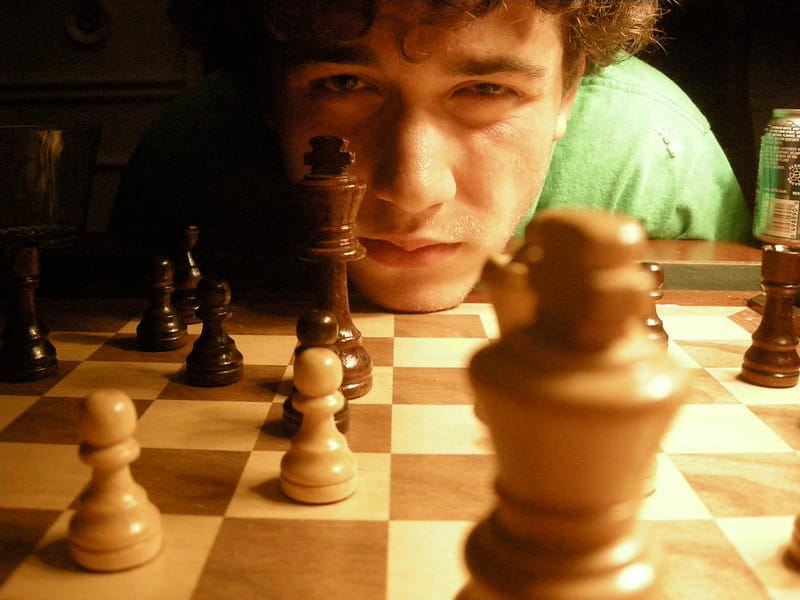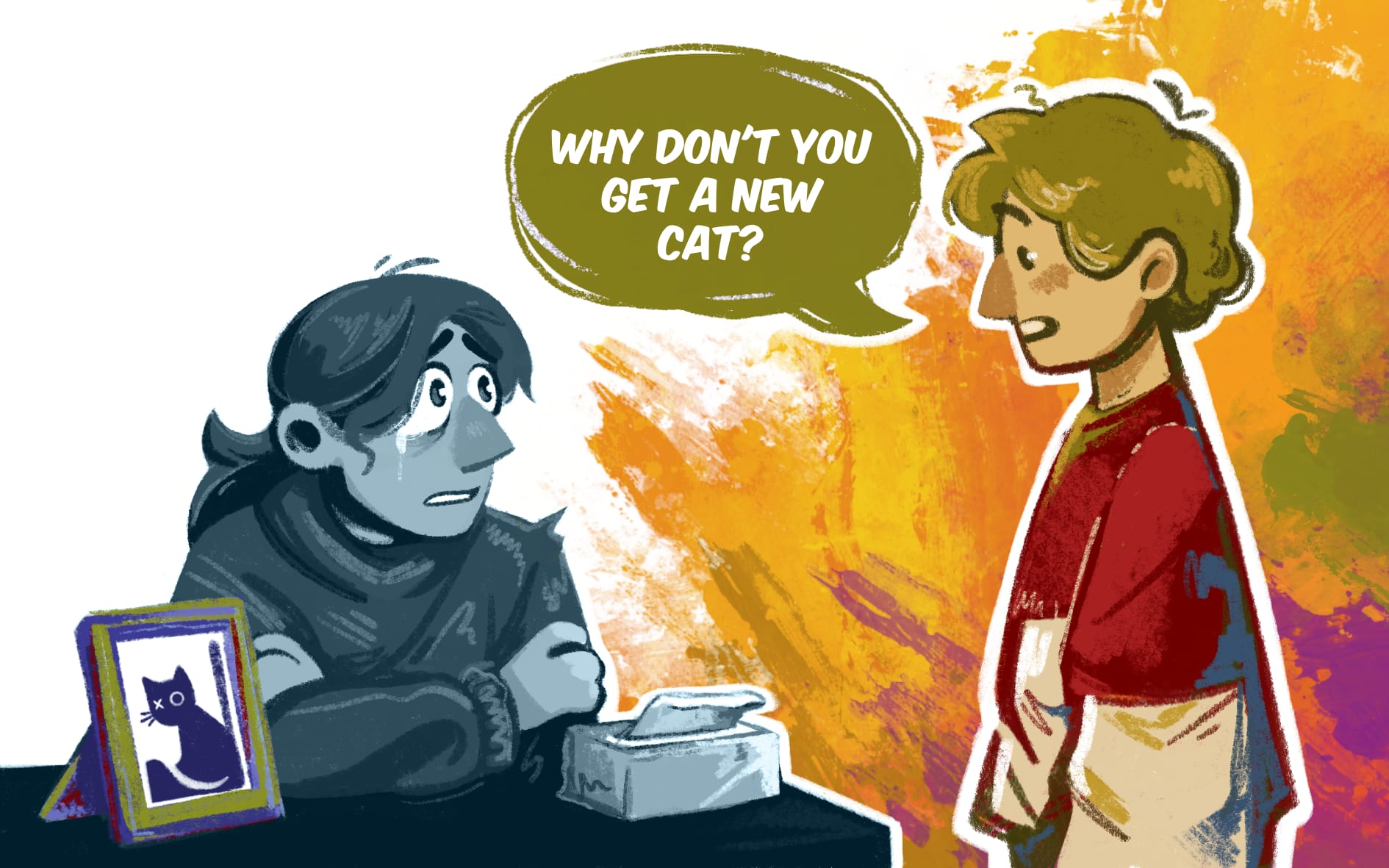
A grandmaster’s mind
Although chess has to compete with all sorts of attention-craving alternatives in the digital era, it is still surprisingly popular nowadays. Social media, streaming platforms, and colorful smartphone games arguably all pose a serious threat to this seemingly antiquated and time-demanding form of amusement. Nevertheless, there seem to be some qualities of chess that maintain some attractiveness in turbulent and garish times. Many people still enjoy its simplicity and plainness, maybe also as an antipode to modern forms of entertainment and diversion.
However, it is not only a fun and relaxing way to spend your time, chess also has a rich history with many ties to all kind of cultural developments across the centuries.
In the literature research for my master thesis (which was about possible transfer effects of playing chess on brain functions) I discovered that the disciplines of psychology and the game of chess had formed an unusual alliance at the turn of the 20th century. This alliance not only changed the approach to how chess is played fundamentally but also shaped the very first models of the newly emerging school of cognitive psychology and supported its first steps. In the following, I will make a brief excursion into the history of chess research and will uncover the astonishing linkage between chess and psychology.
A series of draws
Draws, usually despised in competitive sports, are not at all uncommon in chess (see Karlonline). On grandmaster level, around half of games played result in a draw. Our current world champion of chess is Magnus Carlsen. After a series of 12 draws, Carlsen broke this trend in 2018 and defended his title for the third time with a clear 3-0 victory in the tiebreaks. It was the first time in the 132-years history of the FIDE (Fédération Internationale des Échecs) chess world championship that 12 classical matches in a row had ended in a draw.
An old theory by first ever world chess champion Wilhelm Steinitz (1836 – 1900), who won the first official world championship of chess in 1886, proposed that; given flawless play by both sides in every move, the result of the game should necessarily turn out to be a draw. Looking at the series of draws in the recent world championship matches one might interpret this as confirming evidence for Steinitiz’s theory.
The draw death of chess
At the turn of the 19th to the 20th century, the for a long time dominating period of “romantic chess” which was signified by a risky and aggressive style of play, was gradually replaced by the so-called “modern school” of chess.
The “modern school”, originally developed by Wilhelm Steinitz, promoted slow paced and solid positional play over the risky manoeuvres of the romantic era. At that time this development was not received enthusiastically by all contemporaries. Some claimed that the austere and rational approach of the “modern school” would make chess more predictable and less entertaining for the spectator. All kinds of positions, specifically in the beginning and at the end of the game, were analysed meticulously and elaborate theories have been developed to provide rules for an “optimal” approach to each of them.
In response to this development José Raul Capablanca, a world champion of the early 20th century, even proposed to enhance the set of pieces for chess, as he feared that the advancement of theoretical understanding of positions would inevitably lead to more and more games ending in a draw and ultimately the “draw death” of chess.
This “scientific” turn chess took through the influence of Steinitz` „modern school“- approach was only one factor that would change the approach to chess fundamentally. At that time not only did the approach to chess by the players themselves changed fundamentally, chess itself became an object of interest for scientific research (see faz.net).
In 1893 Alfred Binet, the father of formal intelligence testing, investigated the cognitive abilities and operations of expert chess players, as he suspected that high performance in chess would go along with superior mathematical ability. Furthermore, he designed experiments to measure the memory performance of expert blindfold chess players, who could beat several opponents without seeing the board. In the beginning, he assumed that blindfolded players displayed this superior memory capacity because they had the capability to hold exact visual presentations of the chess board in mind. When asking the participants however, to describe the memorized image they had in mind, they often referred to abstract and schematic concepts rather than accurate descriptions. With his research he laid the foundation for the systematic investigation of the psychometric properties of chess players that followed over the succeeding decades.
Fruit Flies and Chess
Based on Binet’s initial experiments in 1943 a young Dutch researcher named Adrian de Groot published his PhD dissertation as a book with the title “Thought and Choice in Chess”. In his studies De Groot used different “choice-of-move-problems” in which the participant had to evaluate a given position and then indicate the best possible option for a subsequent move. While the participants analysed the position they should describe their thinking process. Interestingly, the results indicated that grandmasters did not differ significantly in their depth of analysis (the number of moves they calculated ahead) from weaker players, despite choosing the better moves. Moreover, a study on memory performance, in which the participants were exposed to different chess positions for a short time period, revealed that grandmasters displayed a vastly superior performance compared to less experienced players, when they were asked to recall the exact configuration of pieces in the positions. Similarly to the observations made by Binet for blindfolded chess players, de Groot found that abstract organization of pieces into meaningful concepts played a key role in the superior performance of experts in chess related memory tasks.
After de Groot’s initial study the interest of the scientific community in chess as a research object increased, as it displayed a promising approach for the investigation of basic cognitive functions in the emerging field of cognitive psychology.
Some researchers even suggested chess being akin to the “drosophila” in the field of genetics. What made chess especially valuable in the eyes of cognitive researchers was its well-specified and constrained rule structure, which facilitated experimental manipulation in a standardized manner.
Furthermore, the leading chess associations provided a universally accepted rating system (the Elo system), which allowed exact quantification of chess skill.
Building upon the observations of Binet and de Groot, researchers discovered that there were two general cognitive processes in which expert chess players differed significantly from novices in their approach to the game. With prolonged practice expert players develop a vast system of positional knowledge that is achieved through “chunking” piece formations into meaningful concepts and an enhanced ability to shift attention quickly to the most important details of a given position. Hence, the superior performance of chess experts can primarily be explained by memory and perceptual processes.
The future of chess
Not only was chess a helpful research object to observe and test models of thought and decision processes, it also served as a bridge to the disciplines of computer science and artificial intelligence. Based on the key aspects that cognitive research revealed to be of fundamental importance for expert chess performance, algorithms could be designed that aimed to model the mental processes of top-level chess players (see blog.zeit).
With the rapidly increasing processing power of computers it was only a matter of time that even the best human players would be outperformed by their machine counterparts. In 1997 Gary Kasparov, the then-reigning world-champion of chess, was beaten by a chess computer program with the name Deep Blue. Since then computers have become so powerful that even the processor of a regular smart phone could run a chess program that would beat chess world champion Magnus Carlsen with ease.
Hence, the days that humans could compete with chess computers have long been over. Today chess algorithms are primarily used to aid the analysis of games and to discover and evaluate new approaches to positions. The search capacity of Stockfish, one of the most powerful and frequently used chess engines today, is ~70.000.000 moves per second.
This is certainly an impressive number. However, according to (rough) estimations made by the mathematician Claude Shannon there are about 10^43 possible board positions (Including only positions that are “sensible” according to the rules of chess). Considering this unimaginably immense number, the rate by which modern chess computers can analyse positions seems tiny.
A helpful analogy is to imagine chess as a huge mountain, through which computer analysis drives tunnels. The most complicated positions are in the centre of the mountain and are gradually uncovered from both sides of the mountain, which are opening and endgame analysis. For endgames with 7 or less pieces, for example, finite solutions already exist. Nevertheless, the number of possible games is much too large to be solved by today’s technological means.
Epilogue
From the first research on the calculating abilities of chess players by Alfred Binet to the algorithms of chess computers like Stockfish, chess has played a formative role of today’s conception of cognition. The future will show if the multidisciplinary field of chess research will bring about more fruitful ideas and insights into our thought processes.
As a chess player myself I would like to conclude with an anecdotal appeal.
To me playing chess brings the most joy when I was sitting down somewhere with a stranger or a friend, sipping a beer, having a chat about anything and everything, immersed in ardent contemplation. I can only recommend trying it yourself.
Image by Ian T. McFarland from Flickr (all creative commons).
Selected references
Binet, A. (1894). Psychologie des grands calculateurs et joueurs en echec. Librairie Hachette, Paris. Retrieved from: https://archive.org/details/psychologiedesg00binegoog
De Groot, A. D. (2014). Thought and choice in chess (Vol. 4). Walter de Gruyter GmbH & Co KG.
Gobet, F. (2001). Chess Expertise, Cognitive Psychology of. International Encyclopedia of the Social & Behavioral Sciences, 1663-1667. Doi:10.1016/B0-08-043076-7/01604-1.
Shannon, C. E. (1950). XXII. Programming a computer for playing chess. The London, Edinburgh, and Dublin Philosophical Magazine and Journal of Science, 41(314), 256-275.



